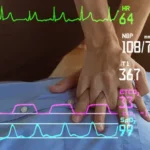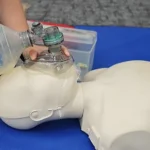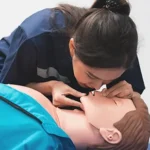An active emergency medical responder is one of the most crucial members of society. They risk their lives for unknown people. While the job needs a lot of courage, they also need knowledge of life-saving skills. An emergency medical responder course or EMR certification can help people in this field with the correct information. This blog looks into the job role of an Emergency Medical Technicians (EMT) member and the emergencies they may face at work. You will also read about the right place from where EMT members can take their advanced life-saving course.
What is the job role of an active emergency response team member?
As a part of the Emergency Medical Services (EMS) team, you must stay agile. Most people don’t realize that EMS members are some of the most learned and punctual. They deal with high-risk environments and need to have skills to save the lives of others and their own. Some of the emergency medical care duties include:
- Emergency Rescuer: Provide critical aid to individuals imperiled or trapped amidst emergencies, showcasing expertise in swift and strategic interventions.
- Paramedic Professional: Deliver specialized medical assistance and care to those afflicted by injuries, demonstrating a mastery of advanced life-saving techniques.
- Fire Suppression Specialist: Extinguish fires with precision and courage, ensuring the rescue of individuals from perilous, burning structures through strategic and calculated actions.
- Law Enforcement Officer: Safeguard the public’s well-being, apprehending wrongdoers who defy regulations in crises, exhibiting a steadfast commitment to maintaining order.
- Emergency Dispatcher: Field emergency calls with acumen, orchestrating swift responses to those in need, utilizing researched protocols to ensure efficient assistance deployment.
- Search and Rescue Specialist: Employ advanced techniques to locate and retrieve lost or missing individuals, exemplifying a depth of knowledge in rescue operations to ensure a thriving return to safety.
- Emergency Medical Technician (EMT): Give first aid and help sick or injured people until they can go to the hospital.
- Hazardous Materials Specialist: Deals with dangerous substances or chemicals to keep people safe. EMTs should know how to provide assistance in such critical situations and stop the hazardous leak.
- Emergency Management Coordinator: Plan and organize emergency responses to ensure everyone knows what to do.
- Communication Specialist: Keep everyone informed by giving updates and instructions during emergencies.
What kind of medical emergencies does an EMR see in a day?
The everyday life of an emergency medical responder (EMR) is full of medical emergencies. While some require first aid, others may need CPR and AED.
- Broken Bones: When someone falls or has an accident, their bones might break, and the EMT helps by providing a cast or splint to help it heal.
- Allergic Reaction: Sometimes, people have bad reactions to certain foods. In this situation, the EMT gives medicine to make them feel better.
- Cardiac Arrest: Emergency medical responders perform CPR on an unconscious patient suffering from cardiac arrest.
- High Fever: When someone has a very high temperature, the EMT gives medicine and suggests ways to make them more comfortable.
- Cuts and Scrapes: If someone gets a deep cut or scrape, the EMT cleans it and puts a bandage on it to prevent infection.
- Stomach Ache: When someone’s tummy hurts, the EMT checks for possible reasons and gives medicine or advice to feel better.
- Sprained Ankle: When someone twists their ankle, swells up, and hurts, the EMT wraps it with a bandage and advises rest and ice.
- Nosebleed: When someone’s nose starts bleeding, the EMT helps them tilt their head forward. This technique applies pressure to stop the bleeding.
An emergency medical responder course teaches them to provide the best care to patients and perform lifesaving interventions while awaiting additional support. It teaches them comprehensive EMS response to help people and get them necessary medical care.
Advantages of an ACLS course
The Advanced Cardiovascular Life Support Now is a learning platform. It provides nationally and internationally recognized courses on several advanced life saving courses. The Advanced Cardiovascular Life Support Course from ACLS Now has many advantages, like those below.
- Qualified Instructors: At ACLS Now, qualified instructors teach you perform basic interventions with minimal equipment.
- Increased Confidence: With this course, you gain the right knowledge and skills for handling emergencies. The training prepares you to make critical decisions quickly and efficiently. It enhances your overall preparedness and ability to save lives.
- Use of Latest Technology: ACLS Now certification courses use the latest technology to deliver techniques. You can learn advanced techniques well and be industry ready in no time.
- Continuing Education Credits: You can get continuing Education credits after completing the ACLS course. You also get a wallet card upon successful completion of the course.
- Self-paced Learning: ACLS Now offers exclusively online courses. As EMTs often have very hectic schedules, online classes will help them stay current. These courses can be taken conveniently from home and still offer a valid certification.
Conclusion
Emergency medical team members must be on their toes and work hard to keep their neighborhoods safe. A certified emergency medical responder course will help them save lives faster. Head to the ACLSNow website for a comprehensive course. This platform offers nationally and internationally recognized courses that prepare you for medical emergencies. So, log onto the ACLS Now website and start your course today.







